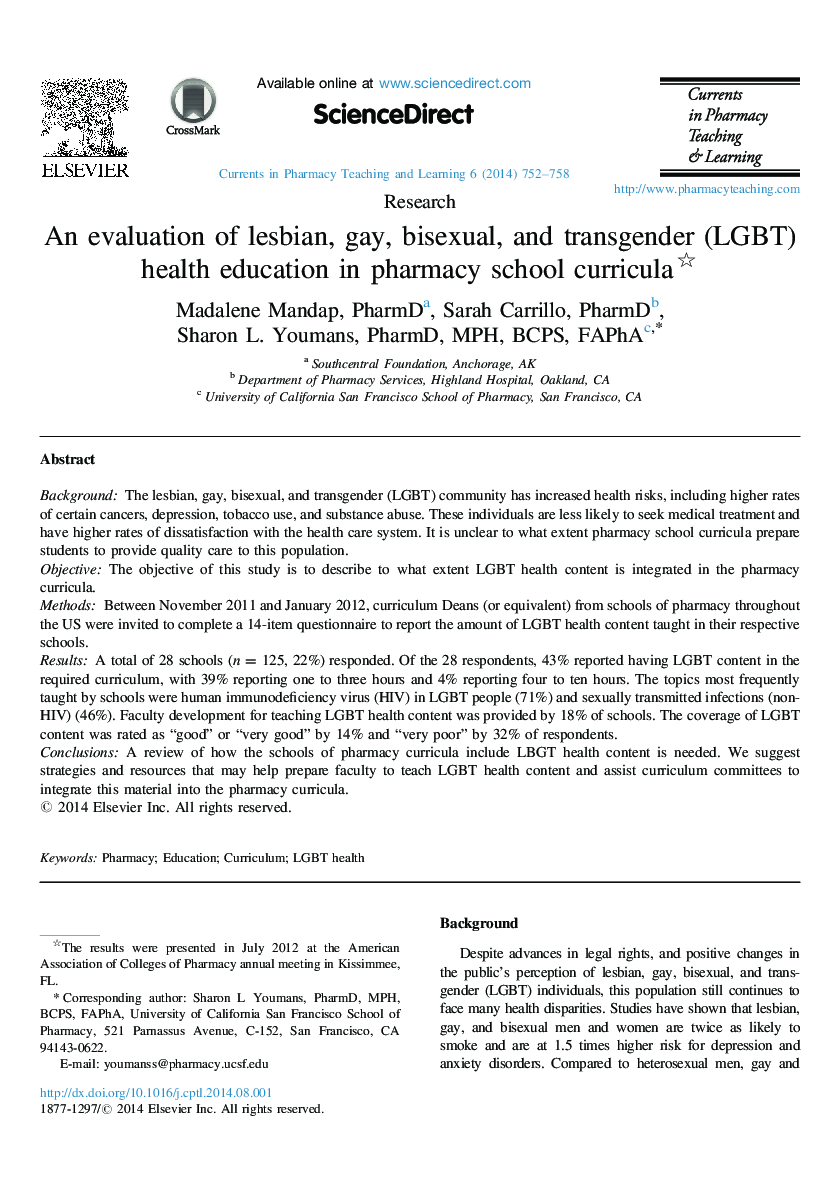| Article ID | Journal | Published Year | Pages | File Type |
|---|---|---|---|---|
| 353106 | Currents in Pharmacy Teaching and Learning | 2014 | 7 Pages |
BackgroundThe lesbian, gay, bisexual, and transgender (LGBT) community has increased health risks, including higher rates of certain cancers, depression, tobacco use, and substance abuse. These individuals are less likely to seek medical treatment and have higher rates of dissatisfaction with the health care system. It is unclear to what extent pharmacy school curricula prepare students to provide quality care to this population.ObjectiveThe objective of this study is to describe to what extent LGBT health content is integrated in the pharmacy curricula.MethodsBetween November 2011 and January 2012, curriculum Deans (or equivalent) from schools of pharmacy throughout the US were invited to complete a 14-item questionnaire to report the amount of LGBT health content taught in their respective schools.ResultsA total of 28 schools (n = 125, 22%) responded. Of the 28 respondents, 43% reported having LGBT content in the required curriculum, with 39% reporting one to three hours and 4% reporting four to ten hours. The topics most frequently taught by schools were human immunodeficiency virus (HIV) in LGBT people (71%) and sexually transmitted infections (non-HIV) (46%). Faculty development for teaching LGBT health content was provided by 18% of schools. The coverage of LGBT content was rated as “good” or “very good” by 14% and “very poor” by 32% of respondents.ConclusionsA review of how the schools of pharmacy curricula include LBGT health content is needed. We suggest strategies and resources that may help prepare faculty to teach LGBT health content and assist curriculum committees to integrate this material into the pharmacy curricula.
